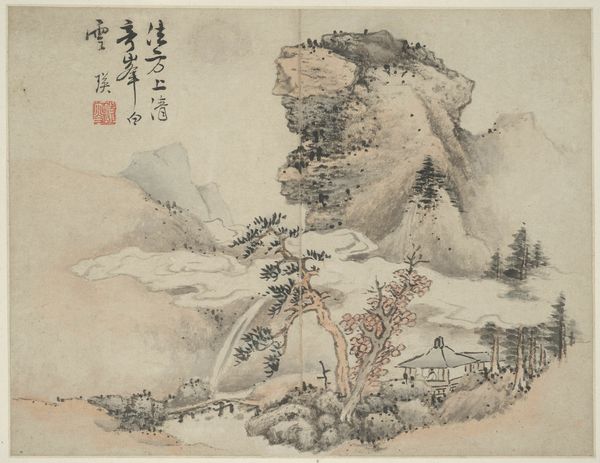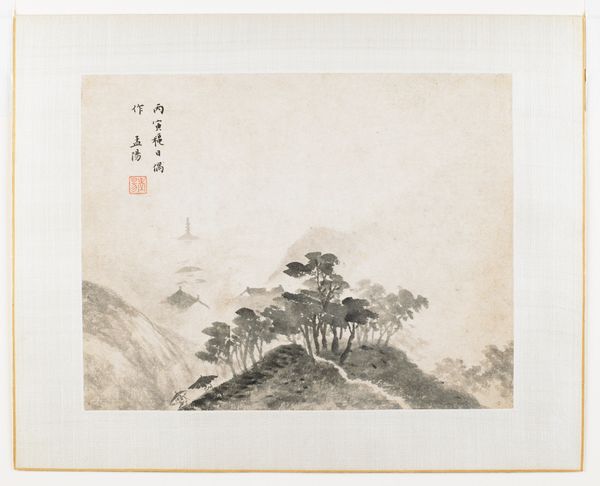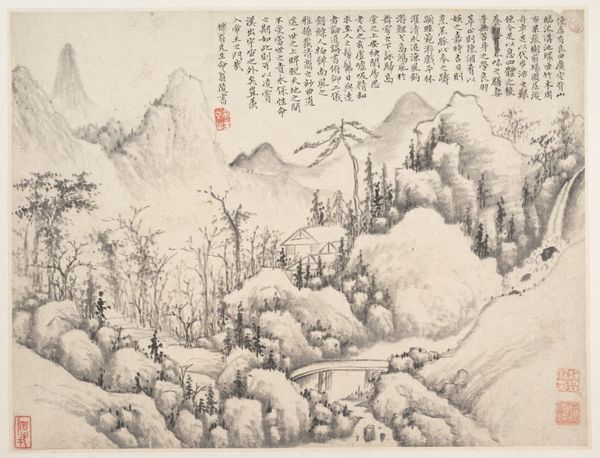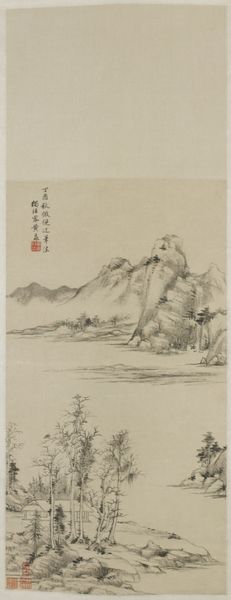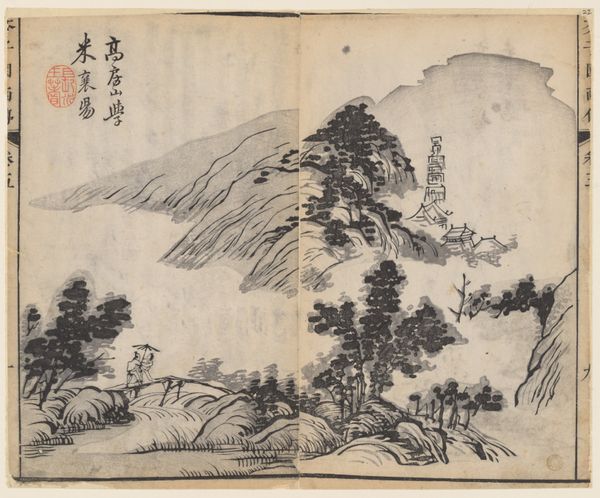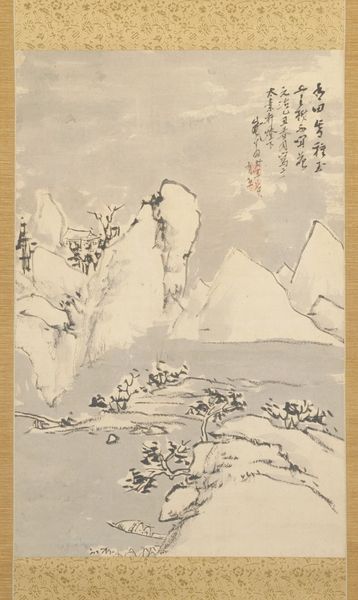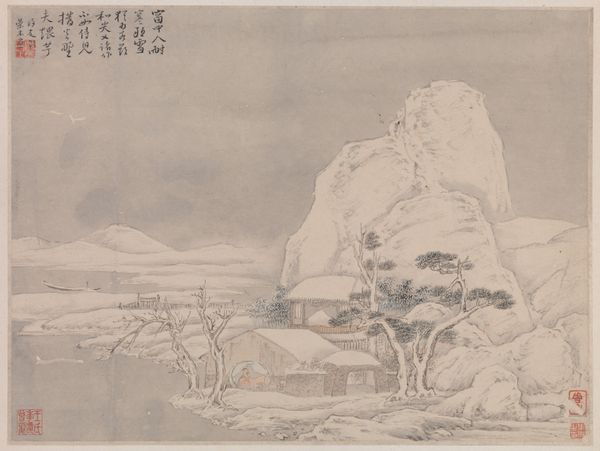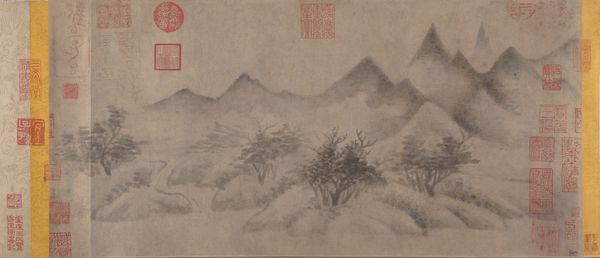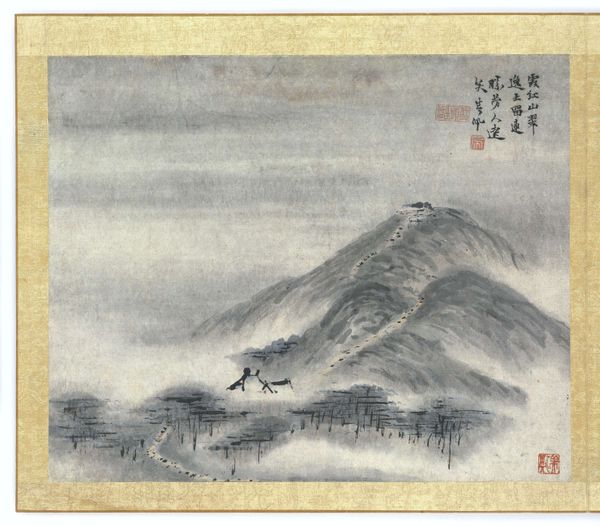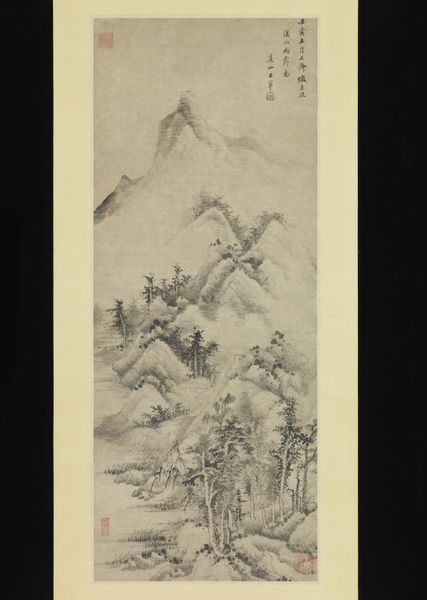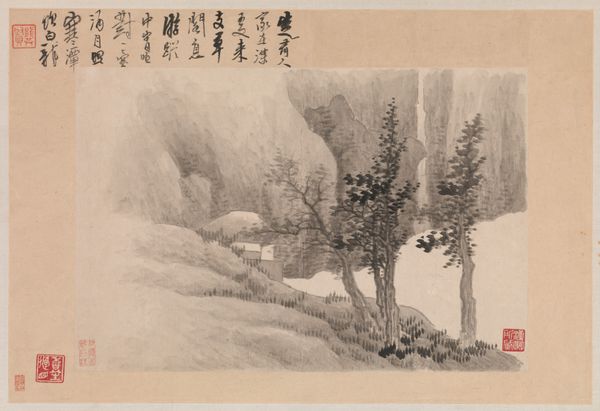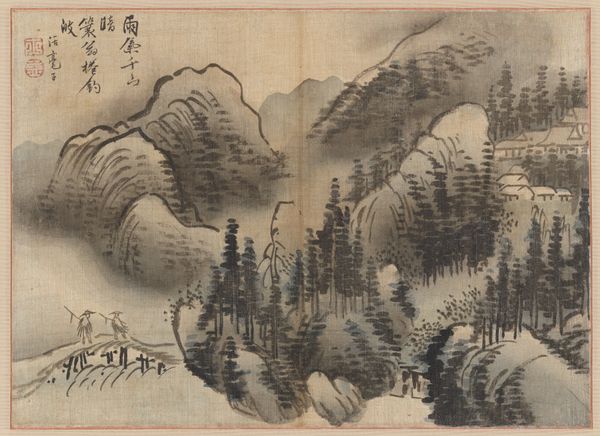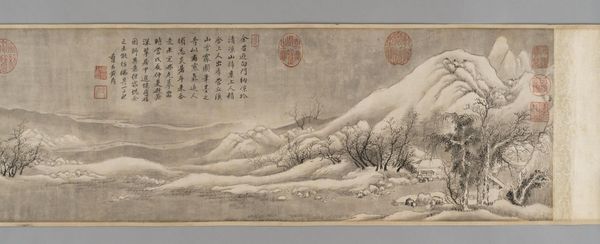
Landscape in the Style of Ancient Masters: after Gao Shangshu, following Dong Yuan (active 937-975) and Ju Ran, and later in the style of Mi Fu (1051_-1107) Possibly 1368 - 1644
0:00
0:00
painting, paper, ink
#
medieval
#
painting
#
asian-art
#
landscape
#
paper
#
ink
#
china
Dimensions: 31 × 40.7 cm (12 × 16 in.)
Copyright: Public Domain
Curator: This ink on paper landscape, held at The Art Institute of Chicago, is titled “Landscape in the Style of Ancient Masters: after Gao Shangshu, following Dong Yuan and Ju Ran, and later in the style of Mi Fu.” It's attributed to Lan Ying, possibly dating from the Ming Dynasty, so around 1368 to 1644. Editor: It feels incredibly ethereal. Almost like looking at a memory, or a dreamscape rather than a physical location. The soft gradations of ink create a real sense of atmosphere and distance. Curator: Exactly. Ying is engaging with artistic lineage and labor. We can see it's crafted in homage to past masters and their techniques, reinterpreting traditions, rather than directly from nature. Consider how artistic trends shaped not just the image, but the access to specific pigments or paper qualities for such a work in that era. Editor: True, yet even understanding the cultural framework doesn't diminish the picture’s raw visual impact. The mountain form looms so large in the composition, and then there’s that tiny architectural detail perched amongst the trees. It draws your eye, acting like a key visual element. The relationship of dark and light really helps move the viewer's eye to every part of the work, wouldn't you say? Curator: Certainly, there’s undeniable artistry in how Lan Ying adapted the artistic resources and cultural knowledge he inherited, referencing multiple ancient styles, essentially commenting on painting tradition itself. But to what extent was this truly innovative, or simply fulfilling a pre-existing cultural need within court circles? What does it reflect of patron expectations? Editor: I see your point. Focusing purely on the art itself, observe the calligraphic inscription and seals; it seems to integrate textual and visual elements, contributing to its inherent balance and completeness. Notice the varied brushstrokes as well. Each texture represents an active choice from the painter. Curator: Those choices were tied to what tools were available, from the brushes and inks to the support available at that time and place. The artist's labor existed within tangible economic and cultural structures. The question for me becomes, how innovative was this synthesis, within its context? Editor: Perhaps innovation wasn’t precisely the aim. Perhaps it was about perfecting the elements inherited from predecessors, reinterpreting and presenting them anew, yet refined by history. I find myself lingering on the sheer beauty. Curator: Well, considering the availability of paper and pigments within specific social and trade networks helps better assess the labor of creativity and how deeply it intertwines artistic agency with material constraints. Editor: Perhaps. For me, it is the harmony of tonal gradations that capture my attention and hold my focus. The artist masterfully guides my eyes into the composition’s ethereal and atmospheric depth, prompting a tranquil reflection.
Comments
No comments
Be the first to comment and join the conversation on the ultimate creative platform.
